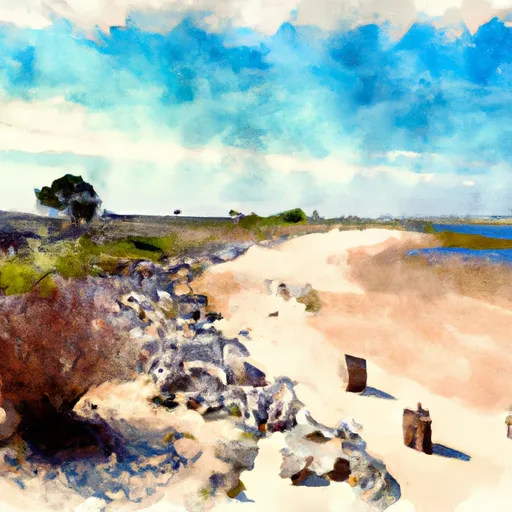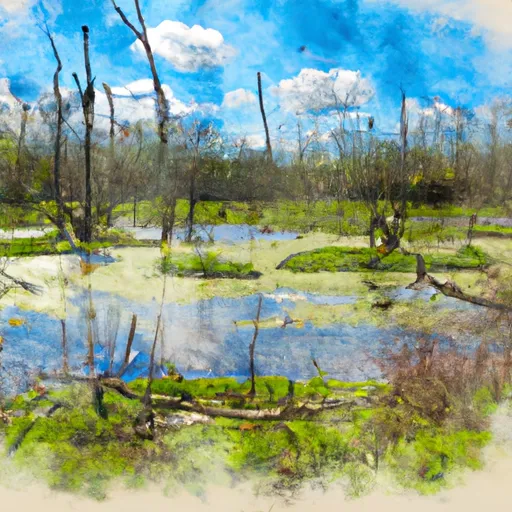Cape May National Wildlife Refuge
Rate this placeLast Updated: January 1, 2026
Located in Delaware, Cape May National Wildlife Refuge is a great place to visit for nature lovers and wildlife enthusiasts.
°F
°F
mph
Wind
%
Humidity
Summary
The refuge covers over 11,000 acres of land and water, providing a home to a diverse range of animal and plant species. One of the best reasons to visit Cape May National Wildlife Refuge is to see the various species of birds that call the area home. The refuge is a critical stopover point for migratory birds, and visitors can see everything from shorebirds to raptors and waterfowl.
There are several points of interest to see while visiting Cape May National Wildlife Refuge. One of the most popular is the Two Mile Beach Unit, which offers stunning views of the Atlantic Ocean as well as opportunities for fishing, swimming, and wildlife watching. Other points of interest include the Cape May Point Unit, which is home to a lighthouse and several hiking trails, and the Delaware Bayshore Unit, which offers a chance to see horseshoe crabs and migratory shorebirds up close.
Interesting facts about Cape May National Wildlife Refuge include its role in protecting and preserving the fragile ecosystem of the Delaware Bay area. The refuge is home to several endangered and threatened species, including the red knot, a shorebird that relies on the area as a stopover point during its migration. Additionally, the refuge is an important breeding ground for several species of fish, including striped bass and weakfish.
The best time of year to visit Cape May National Wildlife Refuge depends on what you want to see. Spring and fall are the best times to see migratory birds, while summer is a great time to enjoy the beach and water activities. Winter is a quieter time at the refuge, but visitors can still see a variety of wildlife, including waterfowl and seals. Regardless of when you visit, Cape May National Wildlife Refuge is a beautiful and fascinating place to explore.
Weather Forecast
Park & Land Designation Reference
Large protected natural areas managed by the federal government to preserve significant landscapes, ecosystems, and cultural resources; recreation is allowed but conservation is the priority.
State Park
Public natural or recreational areas managed by a state government, typically smaller than national parks and focused on regional natural features, recreation, and education.
Local Park
Community-level parks managed by cities or counties, emphasizing recreation, playgrounds, sports, and green space close to populated areas.
Wilderness Area
The highest level of land protection in the U.S.; designated areas where nature is left essentially untouched, with no roads, structures, or motorized access permitted.
National Recreation Area
Areas set aside primarily for outdoor recreation (boating, hiking, fishing), often around reservoirs, rivers, or scenic landscapes; may allow more development.
National Conservation Area (BLM)
BLM-managed areas with special ecological, cultural, or scientific value; more protection than typical BLM land but less strict than Wilderness Areas.
State Forest
State-managed forests focused on habitat, watershed, recreation, and sustainable timber harvest.
National Forest
Federally managed lands focused on multiple use—recreation, wildlife habitat, watershed protection, and resource extraction (like timber)—unlike the stricter protections of national parks.
Wilderness
A protected area set aside to conserve specific resources—such as wildlife, habitats, or scientific features—with regulations varying widely depending on the managing agency and purpose.
Bureau of Land Management (BLM) Land
Vast federal lands managed for mixed use—recreation, grazing, mining, conservation—with fewer restrictions than national parks or forests.
Related References

 Cape May Point State Park
Cape May Point State Park
 Cape May County Zoo Pavilion #5
Cape May County Zoo Pavilion #5
 Cape May County Park and Zoo
Cape May County Park and Zoo
 Dennis Creek State Conservation Area
Dennis Creek State Conservation Area
 Beaver Swamp State Conservation Area
Beaver Swamp State Conservation Area